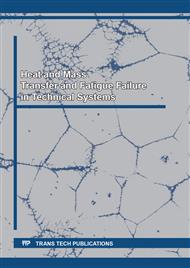p.21
p.39
p.53
p.73
p.81
p.103
p.109
p.115
p.121
Calculation and Experimental Method of Evaluation of Residual Working Resource of Reinforced Rods of Concrete Structures of Hydrotechnicalreinforced Structures
Abstract:
The work carried out complex and systematic studies based on of which the causes of accidental destruction of reinforcement of reinforced concrete structures of hydraulic structures is established, which is that corrosion damage to metal reinforcement is accompanied by its active flooding and embrittlement, resulting in reduced material properties against corrosion and mechanical destruction of reinforced concrete structures, especially after 20-40 years of operation. Based on existing approaches to the assessment of ageing equipment, developed in various branches of mechanical engineering, including the construction industry, identified trends and shortcomings in determining the efficiency of metal structures and their residual life, in connection with which the calculation and experimental methods of using the criteria of crack resistance, sensitive to changes in the structure of the metal during long-term operation. It is established that the decrease in crack resistance characteristics in the surface layers of reinforcement of reinforced concrete structures in contact with the aggressive environment is caused by the degrading effect of hydrogen on the crystal structure of the metal. The calculated-experimental method is offered, allowing to carry out engineering forecast estimation of residual (working) resource of the reinforced concrete designs operated in corrosive-aggressive environments of hydraulic engineering constructions, which adequately reflects physical and mechanical processes in metal which occur during its long operation.
Info:
Periodical:
Pages:
103-108
Citation:
Online since:
April 2022
Authors:
Price:
Сopyright:
© 2022 Trans Tech Publications Ltd. All Rights Reserved
Share:
Citation:


